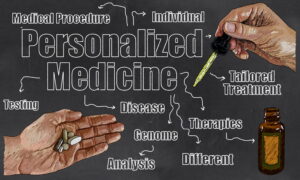The concept of gender medicine originated towards the end of the last century with the aim of promoting the study and appreciation of the differences between males and females (not just humans) in the clinical setting, that is, when it comes to the occurrence, diagnosis, incidence or therapeutic efficacy for a certain disease. Indeed, there is growing evidence that there are marked differences, largely overlooked in the past, not only related to biological variables (e.g., relating to hormones), but also to environmental, cultural and socioeconomic variables. “Having a gendered outlook” means recognizing that males and females are not the same, neither from a strictly physiological point of view nor from a socio-cultural point of view. The correct name for this approach, then, is sex-gender medicine, and its intent is to ensure increasingly appropriate treatments not only for women but for all human beings.
Sex-gender medicine is an approach of medicine that considers patients’ biological and social variables
The development of gender medicine
In science, one of the first major breakthroughs toward this new way of thinking about medicine came in 1991 through the publication in The New England Journal of Medicine of an editorialby U.S. cardiologist Bernadine Healy. First woman to lead the National Institutes of Health (NIH) US, Healy emphasized in his editorial (titled ‘The Yentl Syndrome‘, named after the heroine of a short story by Isaac Bashevis Singer) that much of the cardiology research had so far focused on male patients, which is why women were found to have worse outcomes following heart attacks. Sometimes presenting different symptoms than men, the diagnosis often came too late or the disease was inadequately treated. Thanks in part to this publication, the medical-scientific community began to realize that up to that point all clinical studies, not only in the field of cardiology, had been based on the “white adult male” model, Excluding not only women but also different ethnicities and age groups from those mistakenly regarded as standard. One of the consequences of this approach is that many molecules used today as active ingredients in medicines turn out to have more adverse effects in women than in men.
What is the difference between gender and sex?
As expected, although they may seem synonymous, “gender” e “sex” are actually used in this context to identify, respectively, differences related to cultural, environmental, and socioeconomic aspects, and those having to do with biological parameters-such as weight, hormonal composition, and body fat percentage. Perhaps less obvious than the latter, the former aspect can also have some influence, for example, on what is called compliance, that is, the adherence of the patient or patient to a certain therapy prescribed by the physician.
Some examples
We have mentioned the cardiology context, but many other examples can be given: one is certainly that of cancers. In the oncology context, for example, there is now much evidence that there are important differences between men and women in terms of prognosis or response to treatment, even for the same type of cancer. For example, let’s consider bladder cancer, of which more than 20,000 men and about 5,000 women fall ill each year, the different incidence in the male and female population is slowly being reversed: in recent years it is decreasing in men, while it is significantly increasing in the female population. Given that cigarette smoking significantly increases the risk of occurrence for bladder cancer, this “rapprochement” between female and male populations could be related to the fact that, on average, more female smokers are smoking than in the past. This example makes it clear how important it is to also take into account gender factors: in this case, the fact that the social and economic emancipation of women has prompted them to acquire habits that were previously predominantly male, such as cigarette smoking, and that this has an effect on the epidemiology of specific diseases. Another interesting aspect is that of diagnosis: on average, this is delayed more in women than in men. In fact, women are more prone to urinary infections, which, like bladder cancer, can cause blood in the urine. This results, unnecessarily, in several rounds of antibiotics before receiving the correct diagnosis. Such an error happens less often in men.
Sex-gender medicine has nothing to do with differences in the reproductive system of the two sexes
Gender medicine is the medicine of differences
In light of all this, it seems clear how sex-gender medicine should be regarded as the “medicine of differences,” a concept that comes close to that of precision medicine. Indeed, both aim to study and enhance the differences not only between men and women but between individual and individual.







